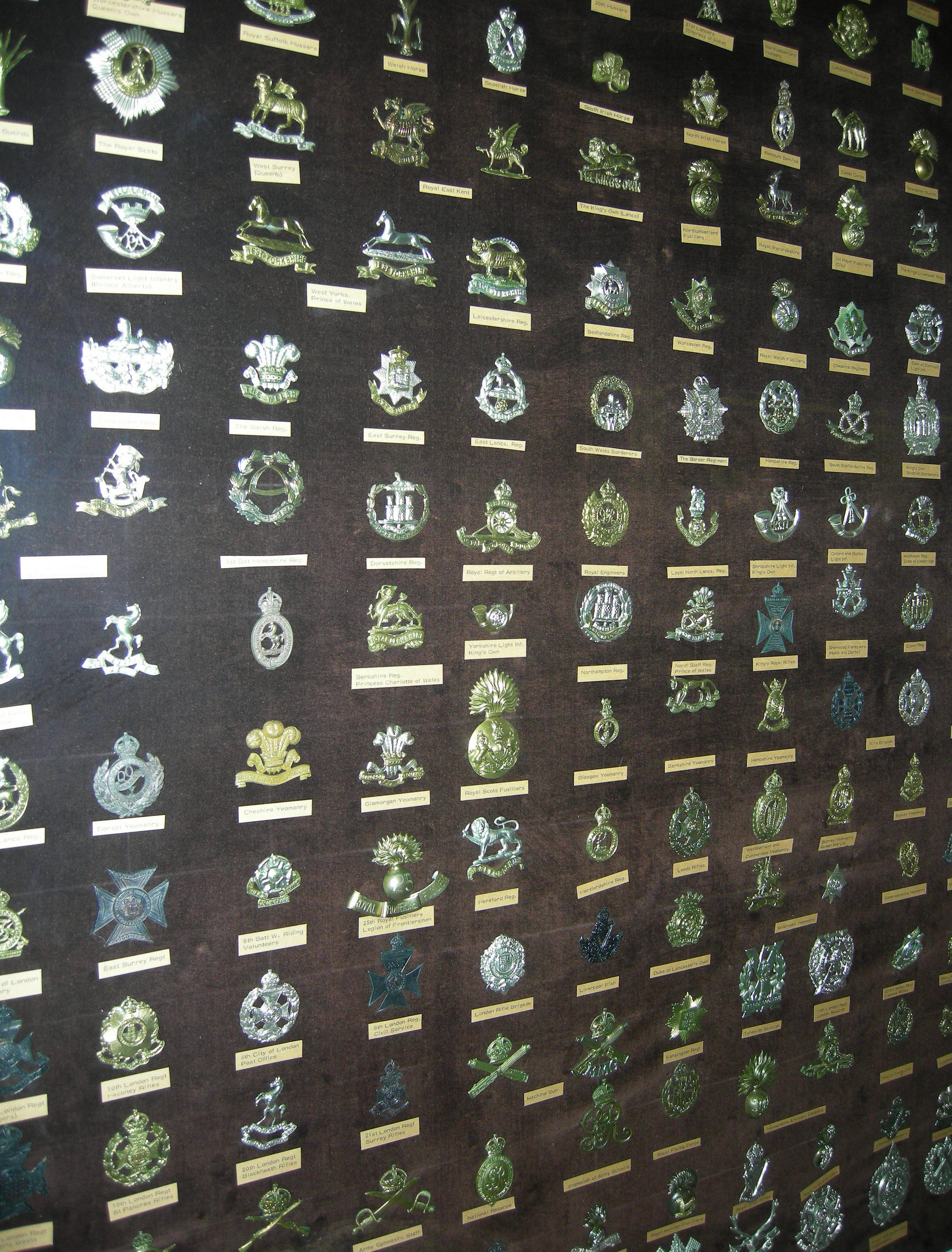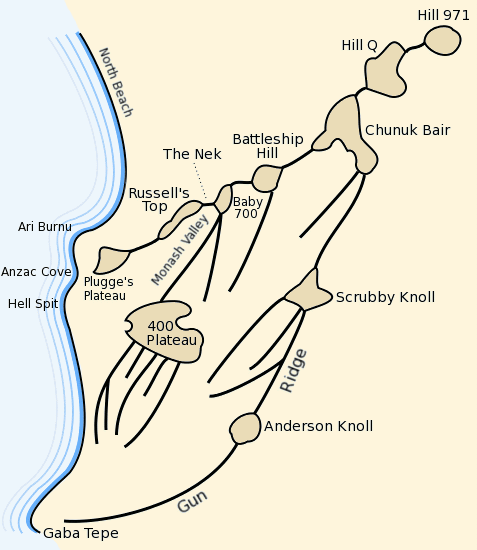|
New Zealand Rifle Brigade (Earl Of Liverpool's Own)
The New Zealand Rifle Brigade (Earl of Liverpool's Own), affectionately known as The Dinks, was formed on 1 May 1915 as the third brigade of the New Zealand Division, part of the New Zealand Expeditionary Force. During the First World War it fought in Egypt, against the Senussi Campaign, Senussi, and then on the Western Front (World War I), Western Front. It was disbanded on 4 February 1919. Background Following the outbreak of the First World War, the Reform Government of New Zealand, New Zealand government authorised the formation of the New Zealand Expeditionary Force (NZEF), under the command of Major General Alexander Godley, for service abroad. By October 1914, there were sufficient volunteers to form two brigades, the New Zealand Infantry Brigade and the New Zealand Mounted Rifles Brigade, New Zealand Mounted Brigade. These two formations formed the main body of the NZEF and, together with the Australian 4th Infantry Brigade (Australia), 4th Infantry Brigade and the 1st Lig ... [...More Info...] [...Related Items...] OR: [Wikipedia] [Google] [Baidu] |
Cap Badge
A cap badge, also known as head badge or hat badge, is a badge worn on uniform headgear and distinguishes the wearer's nationality and/or organisation. The wearing of cap badges is a convention commonly found among military and police forces, as well as uniformed civilian groups such as the Scouting, Boy Scouts, civil defence organisations, ambulance services (e.g. the St. John Ambulance Brigade), customs services, fire services etc. Cap badges are a modern form of Heraldic badge, heraldry and their design generally incorporates highly symbolic devices. Some badges that contain images of lions or other cats are sometimes informally referred to as cat badges. Instances in military forces British armed forces The British Armed Forces utilise a variety of metal and cloth cap badges on their headdress, generally on caps and berets. They are also worn on Uniforms_of_the_British_Armed_Forces#Turbans, Sikh turbans. British Army In the British Army (as well as other Commonwealth o ... [...More Info...] [...Related Items...] OR: [Wikipedia] [Google] [Baidu] |
Rifle Brigade
The Rifle Brigade (The Prince Consort's Own) was an infantry rifle regiment of the British Army formed in January 1800 as the "Experimental Corps of Riflemen" to provide sharpshooters, scouts, and skirmishers. They were soon renamed the "Rifle Corps". In January 1803, they became an established regular regiment and were titled the 95th Regiment of Foot (Rifles). In 1816, at the end of the Napoleonic Wars, they were again renamed, this time as the "Rifle Brigade". The unit was distinguished by its use of green uniforms in place of the traditional red coat. It also differed in being armed with the Baker rifle in place of smooth-bore muskets. The Rifle Brigade performed distinguished service in both the First and Second World Wars. Post war, in 1958 the regiment formed part of the Green Jackets Brigade as 3rd Green Jackets and was amalgamated with the 1st Green Jackets (43rd and 52nd) and the 2nd Green Jackets (King's Royal Rifle Corps) to form the Royal Green Jackets on 1 Ja ... [...More Info...] [...Related Items...] OR: [Wikipedia] [Google] [Baidu] |
List Of Governors-General Of New Zealand
The following is a list of the governors and governors-general of New Zealand. As the personal representative of the Monarchy of New Zealand, New Zealand monarch, the Governor-General of New Zealand, governor-general performs many of the functions vested in the Crown, such as summoning and dissolving New Zealand Parliament, Parliament, granting or withholding the Royal Assent, making state visits, and receiving ambassadors. These functions are performed on the advice of the head of government, the Prime Minister of New Zealand, prime minister. From William Hobson's appointment in 1841, a total of 37 individuals have served as governor, governor-in-chief (1848–1853), or governor-general (since 1917). Sir Arthur Porritt was the first New Zealand-born governor-general, although he had been living in Britain for 31 years at the time of his appointment. All governors-general since Sir Denis Blundell in 1972 have been New Zealand residents and, with the exception of Sir David Beattie ... [...More Info...] [...Related Items...] OR: [Wikipedia] [Google] [Baidu] |
Ottoman Empire
The Ottoman Empire (), also called the Turkish Empire, was an empire, imperial realm that controlled much of Southeast Europe, West Asia, and North Africa from the 14th to early 20th centuries; it also controlled parts of southeastern Central Europe, between the early 16th and early 18th centuries. The empire emerged from a Anatolian beyliks, ''beylik'', or principality, founded in northwestern Anatolia in by the Turkoman (ethnonym), Turkoman tribal leader Osman I. His successors Ottoman wars in Europe, conquered much of Anatolia and expanded into the Balkans by the mid-14th century, transforming their petty kingdom into a transcontinental empire. The Ottomans ended the Byzantine Empire with the Fall of Constantinople, conquest of Constantinople in 1453 by Mehmed II. With its capital at History of Istanbul#Ottoman Empire, Constantinople (modern-day Istanbul) and control over a significant portion of the Mediterranean Basin, the Ottoman Empire was at the centre of interacti ... [...More Info...] [...Related Items...] OR: [Wikipedia] [Google] [Baidu] |
New Zealand And Australian Division
The New Zealand and Australian Division was a composite army Division (military), division raised for service in the First World War under the command of Major General Alexander Godley. Consisting of several Mounted infantry, mounted and standard infantry brigades from both New Zealand and Australia, it served in the Gallipoli Campaign between April and December 1915. At Gallipoli, the division Landing at Anzac Cove, landed at Anzac Cove on 25 April 1915, coming ashore as follow-on troops to the initial assault force that had made it ashore earlier in the day, and later occupied the northern areas of the Allies of World War I, Allied lodgement. After the initial Allied assault at Anzac Cove, elements of the division were sent to Cape Helles in early May, where they participated in the Second Battle of Krithia, launching an unsuccessful attack towards the Achi Baba peak. The division's mounted units were sent to Gallipoli in mid-May without their horses, to serve as dismounted infa ... [...More Info...] [...Related Items...] OR: [Wikipedia] [Google] [Baidu] |
1st Light Horse Brigade
The 1st Light Horse Brigade was a mounted infantry brigade of the Australian Imperial Force (AIF), which served in the Middle Eastern theatre of World War I. The brigade was initially formed as a part-time militia formation in the early 1900s in New South Wales and then later in Queensland. In 1914, the brigade was re-constituted as part of the AIF and was sent to Egypt. Forming part of the New Zealand and Australian Division, during the Gallipoli Campaign it served in a dismounted role between May and December 1915. After being withdrawn to Egypt it served in the Anzac Mounted Division from March 1916 as part of the Egyptian Expeditionary Force, taking part in the Sinai and Palestine Campaign until the end of the war. It was disbanded in 1919. After the war, the AIF light horse regiments were demobilised and disbanded; however, the brigade briefly existed as a part-time militia formation in Queensland until 1921 when its regiments were reorganised into cavalry brigades. Histo ... [...More Info...] [...Related Items...] OR: [Wikipedia] [Google] [Baidu] |
4th Infantry Brigade (Australia)
The 4th Brigade is a brigade-level formation of the Australian Army. Originally formed in 1912 as a Militia formation, the brigade was re-raised for service during World War I, elements of the brigade served at Gallipoli and in the trenches on the Western Front before being disbanded in 1919. In 1921, the brigade was re-raised as a unit of Australia's part-time military forces, based in the state of Victoria. During World War II the brigade served in the New Guinea and New Britain campaigns. Following the war, the brigade formed part of the 3rd Division, however, it was later reallocated to the 2nd Division, where it serves as a Reserve combined-arms formation including units and personnel from all corps of the Army including armoured, infantry, artillery, engineers, signals and ordnance. History The 4th Brigade traces its origins to 1912, when it was formed as a Militia brigade as part of the introduction of the compulsory training scheme, assigned to the 2nd Military Dist ... [...More Info...] [...Related Items...] OR: [Wikipedia] [Google] [Baidu] |
New Zealand Mounted Rifles Brigade
The New Zealand Mounted Rifles Brigade was a brigade of the New Zealand Army during the First World War. Raised in 1914 as part of the New Zealand Expeditionary Force, it was one of the first New Zealand units to sail for service overseas. The brigade was formed from three regiments – the Auckland Mounted Rifles, the Canterbury Mounted Rifles, the Wellington Mounted Rifles – and smaller support units. Altogether the brigade had an establishment of 1,940 men and 2,032 horses and by the end of the war over 17,700 men had served in the brigade. However, the entire brigade's dismounted rifle strength was the equivalent of only a battalion of infantry. By the end of 1914, the brigade had arrived in British Egypt and was assigned to the New Zealand and Australian Division. Its first active service was, in a dismounted role, during the Gallipoli Campaign, where they fought against the forces of the Ottoman Turkish Empire. Seven months later, after the evacuation from Gall ... [...More Info...] [...Related Items...] OR: [Wikipedia] [Google] [Baidu] |
New Zealand Infantry Brigade
The New Zealand and Australian Division was a composite army division raised for service in the First World War under the command of Major General Alexander Godley. Consisting of several mounted and standard infantry brigades from both New Zealand and Australia, it served in the Gallipoli Campaign between April and December 1915. At Gallipoli, the division landed at Anzac Cove on 25 April 1915, coming ashore as follow-on troops to the initial assault force that had made it ashore earlier in the day, and later occupied the northern areas of the Allied lodgement. After the initial Allied assault at Anzac Cove, elements of the division were sent to Cape Helles in early May, where they participated in the Second Battle of Krithia, launching an unsuccessful attack towards the Achi Baba peak. The division's mounted units were sent to Gallipoli in mid-May without their horses, to serve as dismounted infantry, making up for previous losses. Later that month, the division helped rep ... [...More Info...] [...Related Items...] OR: [Wikipedia] [Google] [Baidu] |
Alexander Godley
General (United Kingdom), General Sir Alexander John Godley, (4 February 1867 – 6 March 1957) was a senior British Army officer. He is best known for his role as commander of the New Zealand Expeditionary Force and II Anzac Corps during the First World War. Born in Gillingham, Kent, in England, Godley joined the British Army in 1886. He fought in the Second Boer War, Boer War and afterwards served in a number of staff positions in England. In 1910 he went to New Zealand as Chief of Army (New Zealand), Commandant of the New Zealand Military Forces. Promoted to temporary major general, he reorganised the country's military establishment. Following the outbreak of the First World War, the New Zealand government appointed him as commander of the New Zealand Expeditionary Force, which he led for the duration of the war. During the Gallipoli campaign, Godley commanded the composite New Zealand and Australian Division, before taking over command of the Australian and New Zealand A ... [...More Info...] [...Related Items...] OR: [Wikipedia] [Google] [Baidu] |







